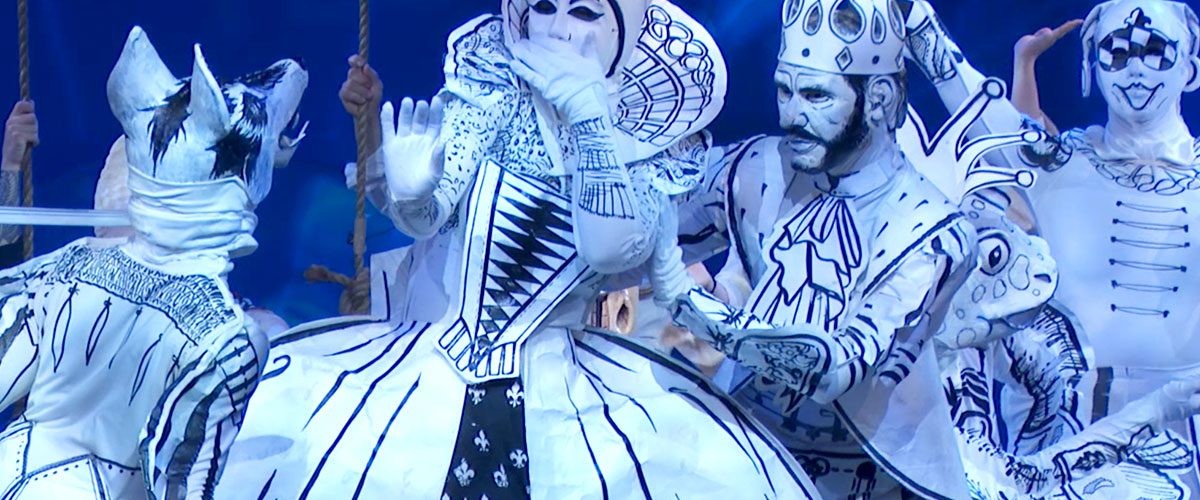This year marks the 30th annual World of WearableArt Awards Show. Our journalist correspondent, Patty Huntington went to report on the opening weekend of the spectacular stage show.
Your induction into the WOW experience starts with the event’s slogan writ large on hoardings outside the show venue – the 5,655-seat capacity TSB Bank Arena down on the Wellington waterfront:
“WOW IS A PLACE WHERE IMAGINATION GIVES WINGS TO DREAMERS”.
That’s a quote from event founder Dame Suzy Moncrieff, a woman surely well acquainted with the concept of wings, having seen more than her fair share of people dressed as insects, birds and aliens over the past 30 years.
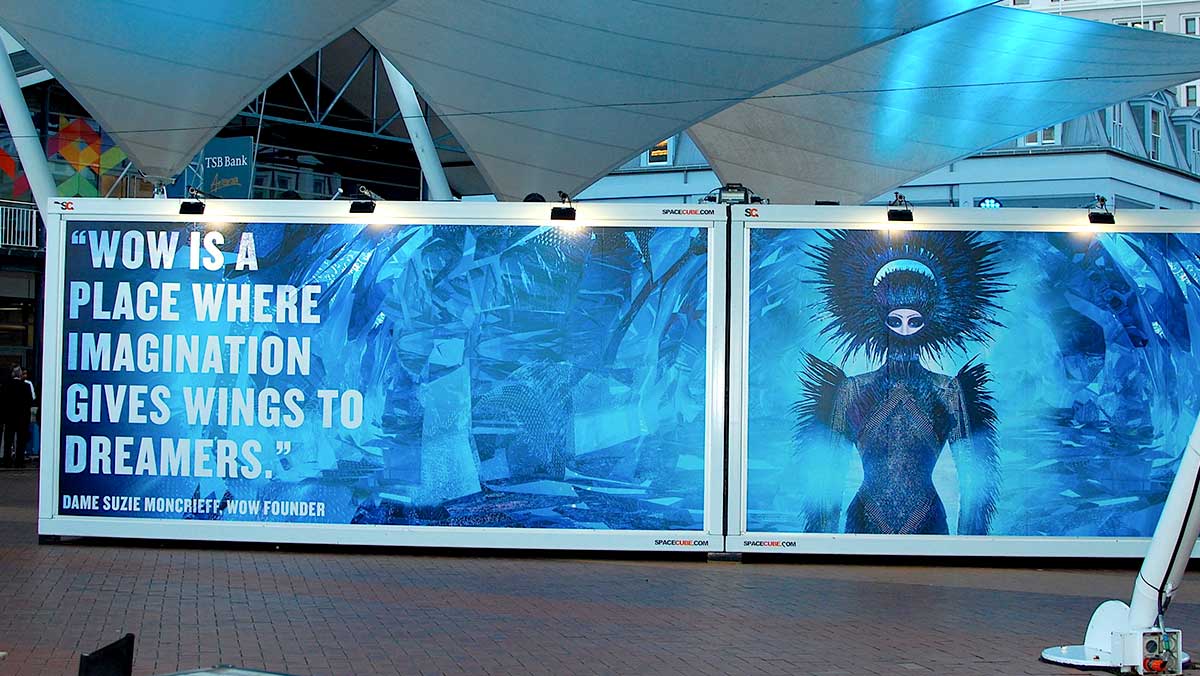
Launched by Moncrieff in 1987 in a small tent outside the William Higgins Gallery in rural Wakefield, outside Nelson, where she was exhibiting her sculptures, the World of WearableArt show is today billed as the world’s leading wearable art design competition and New Zealand’s single largest annual theatrical production, which attracts an estimated audience of 60,000 people over its three week season.
The two-hour show features a cast of 170, who bring to life an edit of the score of weird and wonderful characters and costumes that are submitted to the competition each year by artisans from across the world – a mix of art, fashion and theatre professionals, alongside students and hobbyists.
They’re competing for 39 awards and NZ$170,000 in prize money – NZ$30,000 of that apportioned to the top gong or “Supreme” Award – plus internships with Montreal’s Cirque du Soleil and New Zealand’s five-time Academy Award-winning Weta Workshop creature design and special makeup effects studio, which happens to be located on the other side of the harbour.
In 2018, there were 147 finalist garments on stage, created by 140 designers from 17 countries – 84 of them returning WOW designers and eight previous Supreme Award winners.
“Today we have a big dance troupe, actors, circus performers, huge lighting rigs and an amazing soundtrack that carries the whole show through and we create these amazing worlds,” says Moncrieff. “We take the audience into this journey, where we exhibit these extraordinary works of wearable art in each of these worlds. They deserve to be in special places, not just walking down a catwalk”.
WOW Winners
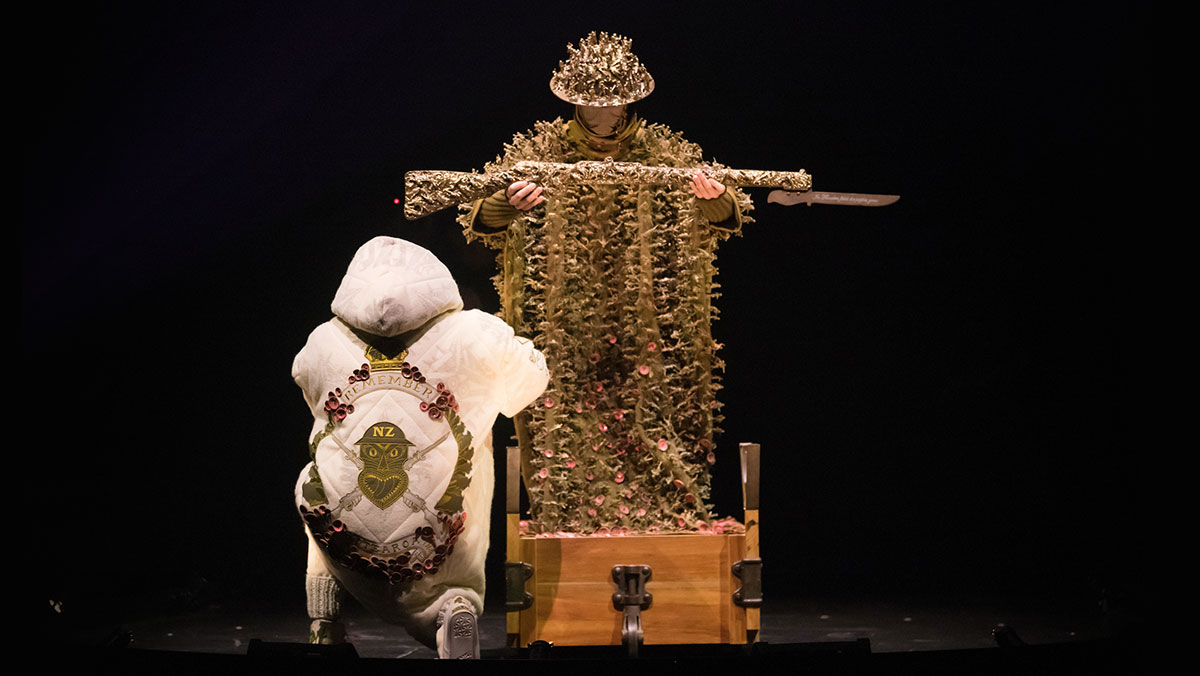
This year’s Supreme WOW Award went to ‘WAR sTOrY’, a WWI homage created by Natasha English and Tatyanna Meharry, two sisters from Christchurch, who also took out the Supreme WOW Award in 2013.
Described by judges as “flawless in its execution”, WAR sTOrY was made from repurposed materials including army blankets, pounamu, crushed red bricks and salvaged rimu wood from demolished houses and features a masked soldier, whose 3D-effect cape and helmet are festooned with hundreds of vintage toy soldiers. The soldier is flanked by a second figure wearing a white puffa jacket, track pants and baseball cap who looks like he could be a hip-hop artist, but is supposed to represent the future.
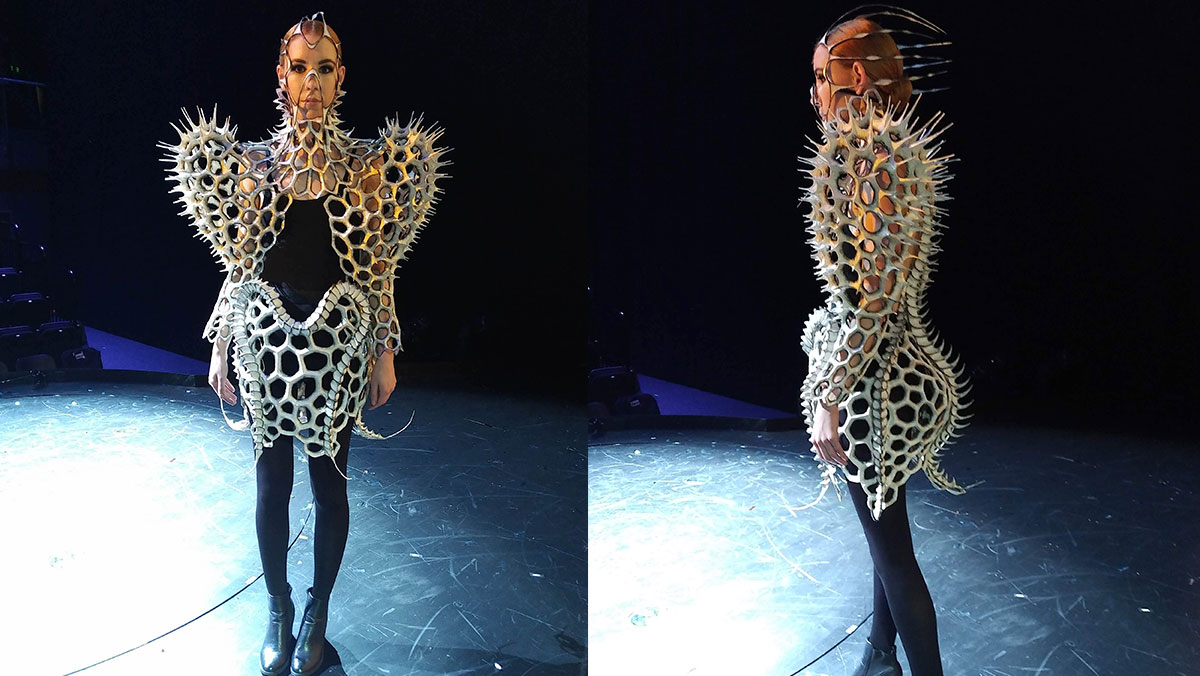
The Supreme WOW Award runner-up and also winner of the ‘Under The Microscope’ section was ‘Ernst Haeckel’s Bride’ from Poland’s Nika Danielska. An elaborate, extraterrestrial-look exoskeleton that from the audience looked like it might have been 3D-printed, it had in fact been hand-crafted from nothing more than wire, paper, paint and glue.

American Grace DuVal took out the Dame Suzy Moncrieff Award for her ‘Mind The Synaptic Gap’ entry fashioned from 350 recycled bicycle inner tubes and iridescent vinyl.

The category’s runner-up was ‘Feminine Hell’ from China’s Xia Tian, Yang Mengtong and He Fangyu, a rather terrifying bodysuit and mask fashioned from 400 painted silica gel dolls.

Other highlights included the Dadaesque latex ‘Blue Star’ from the UK’s Adam McAlavey, which won the UK and Europe section of the International Award.

Above, ‘Quantum’, from Spain’s Annabelle Widmann – a mesmerising, multi-limbed black and white blob made from Lycra and balloons, which flailed across the stage, a deserved winner of the Cirque du Soleil Invited Artisan Award.
While WOW was launched 31 years ago, 2018 marks only its 30th iteration because Moncrieff skipped two years due to a cash crunch – even after mortgaging her house to keep the wheels on at one point. She pushed on, upgrading to Nelson’s largest events arena within two years, before decamping yet again in 2005 to WOW’s current venue in Wellington, to meet demand.
“I took this huge gamble after the second show in 1988 because I was getting sick and tired of inclement weather and tents and all that Portaloo stuff and thought I needed to find a venue with everything organized,” says Moncrieff.
“So I went to the Trafalgar Centre sports stadium in Nelson and hired that and held my breath and just hoped that with my hand-drawn posters and a bit of free advertising on the radio that people would come along and see it. And they did. There was a great line out the door, a quarter of a mile long down the road with these curious people wanting to come and see what this was all about. We had theatre, we had opera, we had Lipizzaner stallions in the show. It’s been a pretty crazy journey in that respect. From there it grew into what it is now.”
“Someone told me the other day that New Zealand has three great brands – Air New Zealand, the All Blacks and WOW,” said WOW chief executive Gisella Carr while addressing a cocktail reception before Friday night’s performance and awards ceremony.
Carr, the former chief executive of Film New Zealand, was appointed WOW CEO in February 2016 – an indication of the increasing corporatization of the event, which delivers an estimated NZ$25.2million each year in economic benefit to Wellington according to the last economic impact assessment in 2016, up 11.5 percent from the previous data in 2013.
“Let’s try and double that over the next few years” added Carr.
The event’s show season might only run for three weeks, but the WOW factor carries on throughout the year at the National WOW Museum in Nelson, which opened in 2001 with the support of local seafood magnate Peter Talley.
A full-scale replica of the production has yet to be staged outside Wellington, however mini shows have been presented as far afield as Dubai, Hong Kong, Japan, Singapore, Malaysia, China and Australia.
There is also an international touring exhibition of WOW archive pieces, which has travelled 38,884 kilometres, visiting five cities across three continents, attracting over 600,000 visitors.
From October 6 through February 3 2019, the WOW exhibition will run at the Erarta Museum of Contemporary Art in St Petersburg, Russia.
WOW may have trademarked both the word “WOW” and term “World of WearableArt”, however the concept of wearable art is widely open to interpretation – as Moncrieff herself discovered back in 1987 when she was looking for an idea to promote the newly-renovated Williams Higgins Gallery and a friend mentioned a wearable art exhibition taking place in Auckland.
After flying herself up to Auckland to investigate, Moncrieff was disappointed to discover the exhibition consisted of just a rack of hand-painted silk garments.
“And I thought ‘That’s not what had in mind’” says Moncrieff. “On my way home on the plane, I was already writing up the first show for WOW and I was really on fire, I suppose, in wanting to make it happen. Being a sculptor I obviously saw amazing sculptures being worn on the body, I imagined the body in materials with beautiful paintings. I saw that quite clearly. And then I envisaged the show, not just being a catwalk show, but becoming a big theatrical event that included many layers in it”.
WOW’s point of difference to the plethora of other wearable art shows staged around the world is not just the scale and calibre of the accompanying theatrical production, but the quality of the work itself – a legacy of opening the competition up internationally a decade ago.
The judging panel also includes best-in-their-field practitioners.
Alongside Kiwis Moncrieff and NOM* d designer Margi Robertson, this year’s judging panel included Weta Workshop co-founder and CEO Sir Richard Taylor, alongside Weta art director and business development manager Sam Gao, Cirque du Soleil costume atelier head Nathalie Bouchard and London-based Mary Wing To, a head leather artisan at Chanel UK and a previous WOW Supreme Award winner (2011).
In a review of the show that was published over the weekend, Los Angeles Times reporter Amanda Jones described the WOW show as “Paris Fashion Week meets Cirque du Soleil and Burning Man”.
Paris Couture Week might be a more apt comparison – at least in terms of the craftsmanship, which is second to none in some cases according to Weta’s Sam Gao.
“Some of them are definitely world class,” says Gao. “When Weta is working in film, we’re making lots of armour and lots of suits and when you take off the armour, the inside is as good as the outside. This year for WOW we saw some beautiful work that did the same thing – it was perfect”.
Fifty thousand buttons were used to create Brit Mingzhang Sun’s rainbow-coloured ‘Hide and Seek’ entry, which won the First-Time Entrant Award.
Fifteen thousand glass beads were hand-stitched onto Kiwi Brita DellaBarca’s towering, candle-inspired entry ‘Release from the grasp of ennui’. DellaBarca told multiple New Zealand media outlets that her dream is to get a job at Weta Workshop.
The late Claire Prebble, who was just 18 when she won the Supreme WOW Award in 2004, went on to work with Weta Workshop’s costume department, working on films including Avatar, The Hobbit and The Amazing Spider-Man 2 and was promoted to head of the department in 2014.
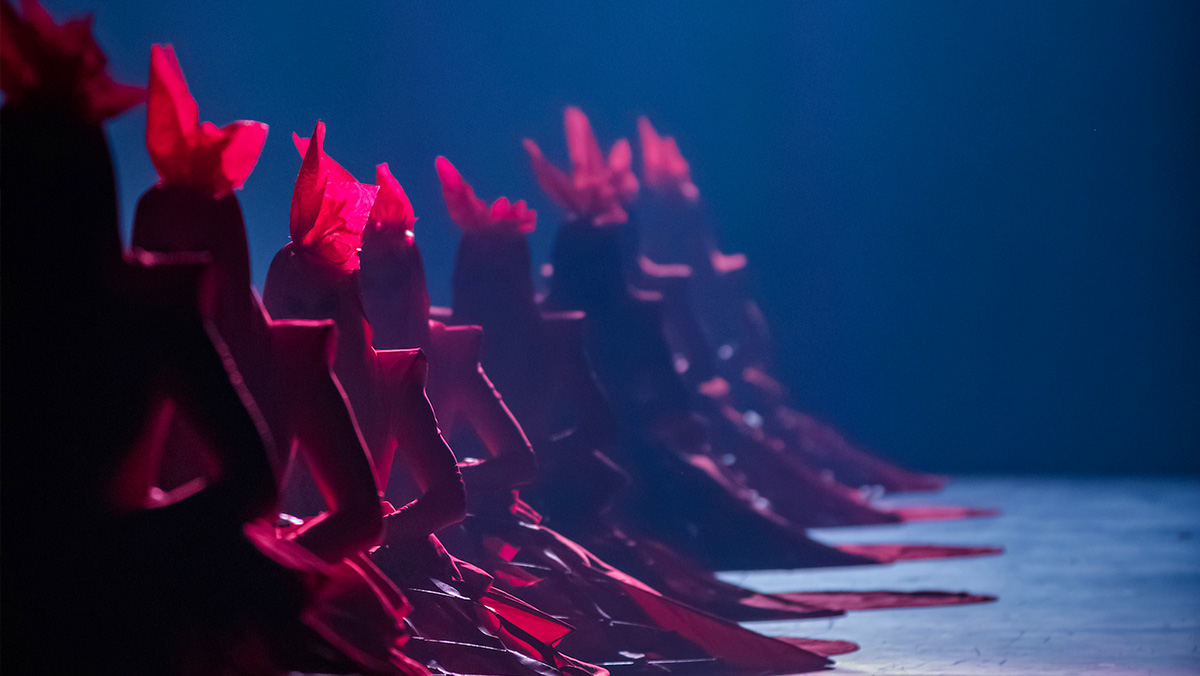
A former ballet dancer and a WOW model for the past 10 years, Jane Wenley also made the WOW-to-WETA transition five years ago as a sculptor, working on costumes and prosthetics for projects such as Ghost In The Shell and collectable figurines for The Lord of The Rings.
“I think they [WOW and WETA] are often quite interlinked,” says Wenley. “I am probably a sculptor because I came from a movement and performance background because I’m really interested in bodies and expressing character and how that works, that’s what drew me to sculpture as an art form”.
“The fact that Weta and WOW are in the same city, we’re so lucky as creatives, being here”.
The writer travelled to Wellington as a guest of the World of WearableArt organisers and Wellington Regional Economic Development Agency. The World of WearableArt show season started 27 September and runs until 14 October 2018. Watch some of the WOW highlights in the video above.


